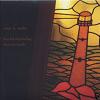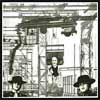- John Kealy
- Albums and Singles
“That Leaving Feeling” is a classic Staples plus sultry female singer duets (in this case with Lhasa de Sela) that is very reminiscent of “Travelling Light” and “Buried Bones” from the Tindersticks back catalogue. It doesn’t quite reach the power of these songs but it is still a fine addition to Staples’ repertoire. “There is a Path” also sounds familiar. Staples must have gotten fed up trying to find new styles of music to sing to and gone back to something more comfortable. Staples’ previous solo work, although good, was a break from this cosy style which suits his velvet voice perfectly, but these two songs sound much like what I’ve been waiting for since 2003 (a new Tindersticks record).
Read More
- Administrator
- Albums and Singles
 This New Zealand group goes underground to summon some nefarious entity to the earthly plane, torment it a little bit for fun, and then banish it back to the void from which it came. None of that is true, of course, but it’s the sort of vivid imagery this strange, dense recording produces.
This New Zealand group goes underground to summon some nefarious entity to the earthly plane, torment it a little bit for fun, and then banish it back to the void from which it came. None of that is true, of course, but it’s the sort of vivid imagery this strange, dense recording produces.
What is true, however, is that the group used battery-powered generators to record this material outdoors. The locations sound suitably subterranean for work so pleasantly claustrophobic. The album is one ever-shifting, continuous flow that’s divided into six track designations that are almost more reference points than anything else. The markers aren’t arbitrary and delineate very definite change, yet they aren’t completely necessary since this is an album best suited to listening in its entirety in a single sitting.
The first track begins with an ethereal drone that sounds like the humming of alien beings while raspy machinery whirs and clanks in the background, punctuated by light harmonic shimmers. Underneath the drones on the next track are clattering bottles or pieces of metal and unearthly groans. It’s not clear exactly what’s happening, but it hints at something fairly sinister. Someone in the group plucks an instrument on the fourth track and the group builds their clanging into a rhythm as their ritual gains momentum. Whatever prey they have in their sights surfaces dramatically on track five, emitting grotesque growls in whatever passes for language in its native realm. A burst of static erupts in track six, as if their enemy’s prowess has been underestimated, but cooler heads prevail as the band manages to get rid of the entity for good.
Make no mistake, this is no Lovecraftian homage, but rather one of the most fully-realized, unique recordings I’ve had the pleasure of coming across in a long time, making me eager to hear what they do next.
samples:
Read More
- Administrator
- Albums and Singles
 The recordings made by This Heat during the band's brief existence (1976-1982) are marked by a startling originality, a flame burning so intensely that it used up all the oxygen in the room and quickly extinguished itself. The trio of Charles Bullen, Charles Hayward, and Gareth Williams made music that was urgent and political and yet esoteric and subterranean; by turns bright and buoyant, then dark, nebulous and scratchy. The music borrowed freely from krautrock, musique concrête, dub, punk and industrial, but never sounded like anything other than This Heat.
The recordings made by This Heat during the band's brief existence (1976-1982) are marked by a startling originality, a flame burning so intensely that it used up all the oxygen in the room and quickly extinguished itself. The trio of Charles Bullen, Charles Hayward, and Gareth Williams made music that was urgent and political and yet esoteric and subterranean; by turns bright and buoyant, then dark, nebulous and scratchy. The music borrowed freely from krautrock, musique concrête, dub, punk and industrial, but never sounded like anything other than This Heat.
Although certainly one of the most highly regarded and influential of the early British post-punk and industrial scene—along with bands like Throbbing Gristle, Cabaret Voltaire, and 23 Skidoo—This Heat over the years have suffered from the scarcity of good reissues of their work. The elusive These Records imprint would occasionally put Deceit or Repeat back into print in nice digital editions throughout the 1990s, but they would quickly go out of print again, entire runs snatched up by greedy collectors. The original LPs are notoriously impossible to track down, and prohibitively expensive to acquire if found. That's why this beautiful and (mostly) exhaustive six-disc box set Out of Cold Storage—a joint release between These subsidiary This Is and Recommended Records (re-christened ReR Megacorp)—is a godsend for those who have waited years to check out the complete issued works of one of the seminal bands of one of the most fruitful eras of modern music.
Delving into this mammoth box set is not like an archaeological dig, unlike some other groups from the era who haven't aged as well. This Heat sound as relevant today, indeed perhaps more relevant, than they did 30 years ago. Their influence seems to have exploded in the last few years, with the rise of post-punk influenced noise-rock bands toying with techniques such as ramshackle improvisation, drone, repetition, dusty analogue synths and outdated rhythm boxes, tape cut-ups and variable-speed editing, unorthodox vocal harmonies and jarring tempo changes. For anyone interested in exploring the roots and influences of groups such as Black Dice, Animal Collective or Excepter, Out of Cold Storage is the motherlode, collecting both of the band's full-length albums, as well as EPs, John Peel sessions and rare live material. Everything is packaged in digipacks that more or less replicate the original LP sleeves, along with a booklet containing extensive notes and interviews with surviving members and vintage photographs of the band. It's a lot to take in all at once, but for adventurous listeners there is nary a moment of wasted time across all six discs.
 This Heat's debut self-titled album (often referred to as Blue and Yellow due to its duochromatic sleeve) still sounds as startling and original today as it must have all those years ago. A song such as "Horizontal Hold" begins in territory far from unfamiliar in the post-punk canon, obtuse upended rhythms and squalls of trebly guitar, tense angularity and a claustrophobic atmosphere of frigidity and angst.
This Heat's debut self-titled album (often referred to as Blue and Yellow due to its duochromatic sleeve) still sounds as startling and original today as it must have all those years ago. A song such as "Horizontal Hold" begins in territory far from unfamiliar in the post-punk canon, obtuse upended rhythms and squalls of trebly guitar, tense angularity and a claustrophobic atmosphere of frigidity and angst.
However, the group takes so many bizarre left turns, stopping and starting at totally unexpected intervals; a textural wall of electronic tones that shift and swell with the lead guitar's discombobulated wanderings; sudden unexpected audio dropouts in which the song is reduced just to drums or keyboard. It's thrilling and disorienting music, using the basic building blocks of post-punk in a completely counterintuitive way. "Not Waving" matches trebly electronic drones with sketchy jazz improv, slowly transforming into something that sounds a bit like a Robert Wyatt piece backed by a gamelan orchestra. Extensive use of cassette varispeeds and stacks of delay turn sketchy percussive pieces such as "Water" into proto-industrial nightmare landscapes. "24 Track Loop" is a classic rhythm track, an upended skeletal dance groove treated to a galaxy of dubby studio effects, heavy cocaine-brain metallic flanges, weird phasing and sudden drops into the echo chamber. As awesome as anything done by TG or Cabaret Voltaire around this same time period.
sample:
- 24 Track Loop (Blue and Yellow)
 A lot has been written about This Heat's follow-up album, the superlative avant-pop album Deceit, so I will be brief here. Suffice to say that it's one of the best albums of the era or any era, the group making a concerted effort to work within basic song structures, using emotionally-charged lyrics to weave a dark fever dream that feels personal, political, elegiac and revolutionary. There are moments of raging, incendiary anger, and moments of quietly expressive beauty.
A lot has been written about This Heat's follow-up album, the superlative avant-pop album Deceit, so I will be brief here. Suffice to say that it's one of the best albums of the era or any era, the group making a concerted effort to work within basic song structures, using emotionally-charged lyrics to weave a dark fever dream that feels personal, political, elegiac and revolutionary. There are moments of raging, incendiary anger, and moments of quietly expressive beauty.
Certain moments lay bare the recording process itself, snatches of feedback and jagged cuts. The band's multi-part vocal harmonies are used to stunning effect, the music a heady mix of krautrock-style motorik repetition, detuned guitar, intense beds of discomfiting electronics and shambolic noisemaking. The album is unparalleled in the postpunk canon, in which it has no obvious peer, and I've always found it easier to compare it to all-time classic Can albums such as Tago Mago or Ege Bamyasi. Not that Can ever had lyrics nearly as suggestive or meaningful as those on "S.P.Q.R." or "Cenotaph," among others, expressing not just the angst of their generation, but also of eternal struggles that rage throughout history. There's nothing else to say about it other than that it is easily one of the best albums ever recorded.
sample:
- Makeshift Swahili (Deceit)
 The Health and Efficiency EP gets its own disc here, although it consists of only two tracks. The title track was This Heat's attempt at producing something sunny and positive as an antidote to the alarming wave of poisonous nihilism that threatened to choke their social milieu: "Here is a song about the sunshine/dedicated to the sunshine."
The Health and Efficiency EP gets its own disc here, although it consists of only two tracks. The title track was This Heat's attempt at producing something sunny and positive as an antidote to the alarming wave of poisonous nihilism that threatened to choke their social milieu: "Here is a song about the sunshine/dedicated to the sunshine."
It's a beautifully dense rock song, possibly the most straightforward song This Heat ever recorded, though it doesn't lack the band's usual propensity for sudden left-turns into strange and disorienting territories, odd field recordings over chugging and repetitive beats. The B-side is "Graphic/Varispeed," which on the original LP contained a note that it could be played at any desired RPM: 16, 33, 45 or 78. Unfortunately, the limitations of the CD format necessitate that it appear at only one speed, in this case 45 RPM. It's a fascinating bit of thickly suggestive subterranean drone, dusty and analog as hell, sputtering and shifting speed at irregular intervals, sounding like the wet dream of modern droners such as Beequeen or The Hafler Trio. Made Available collects both of the band's Peel sessions, combining fantastically possessed renditions of tracks from the debut album with an amazing one-off heavy prog number ("Rimp Romp Ramp") and a handful of puzzling avant-jazz sketches that never really go anywhere, but I'd happily take This Heat's toss-offs over most band's finest hours.
sample:
- Health and Efficiency (Health and Efficiency)
 Repeat is another favorite of mine, a collection of three lengthy tracks, two of which are variants of previous This Heat tracks. The title track is an extended variation on "24 Track Loop" that qualifies as a completely separate track, as the way it unfolds is in stark contrast to the version on Blue and Yellow, though it utilizes much of the same sound material. Add expert remixers to the list of This Heat's accomplishments.
Repeat is another favorite of mine, a collection of three lengthy tracks, two of which are variants of previous This Heat tracks. The title track is an extended variation on "24 Track Loop" that qualifies as a completely separate track, as the way it unfolds is in stark contrast to the version on Blue and Yellow, though it utilizes much of the same sound material. Add expert remixers to the list of This Heat's accomplishments.
The version of "Graphic/Varispeed" included here doesn't seem to change much from the Health and Efficiency EP, though perhaps it plays a bit slower (33 RPM?), which accounts for its extended length. The real gem here is "Metal," a 23-minute mind-melter of clattery industrial percussion that sounds at times like 23 Skidoo's The Culling is Coming or early Einsturzende Neubauten filtered through the sensibility of Indonesian gamelan, Harry Partch, Z'ev and Alan Splet's sound design for David Lynch's Eraserhead. Its tangible arrhythmia journeys through blasted-out furnace factories filled with rusted oil drums, metal pipes, shaman's rain sticks and trance-inducing tape loops and overlays. Repeat is certainly one of This Heat's more challenging works, but no less rewarding. The box set is named after Cold Storage, the abandoned industrial refridgeration unit in which the band recorded the bulk of their material, and its hard not to feel the oppressive frigidity and stark emptiness of this setting on recordings such as this.
sample:
- Metal (Repeat)
Finally there is the rare, unreleased live material, entitled Live 80/81, collected from performances at various European venues during the last tour of the proper trio of Charles, Charles and Gareth. The recording quality is less than ideal, sounding downright muddy most of the way through, with an overload of treble, frequent tinniness and other nagging problems.
Still, one can certainly hear what amazing shows these must have been, with the band performing tight and well-rehearsed versions of tracks from both albums and the EP. Unfortunately, the sound quality on this CD is little better than that on some of the more widely-distributed live This Heat bootlegs that have popped up over the years, which isn't saying much. I'm far from a "quality queen," but at least a little bit of range and fidelity is necessary to fully enjoy a live recording, and these qualities are in short supply on this CD. The liner notes of the disc threaten: "Further CDs from other stages in This Heat's music to follow, including collaborations, improvisations and site-specific work as well as other live CDs." One can only hope that subsequent material will be of slightly better quality, though I (and I imagine others, too) will eagerly buy it and listen no matter what shape its in.
It's hard for me to believe that there weren't enough studio outtakes or alternate takes or mixes to include at least a disc's worth of unreleased material, but that's just as well. What is here is exactly what is promised; all of the music ever released by This Heat, plus more. The packaging is fantastic; true fans will be overjoyed, and those wanting to check the band out for the first time could do worse than just take the plunge and get it all in one fell swoop. This is the most vital, energetic, dizzylingly creative music ever produced under the vague rubric of "post-punk," more than worth its weight in gold.
samples:
- 24 Track Loop (Blue and Yellow)
- Makeshift Swahili (Deceit)
- Health and Efficiency (Health and Efficiency)
- Rimp Romp Ramp (Made Available)
- Metal (Repeat)
- Aerial Photography (Live 80/81)
Read More
- Administrator
- Albums and Singles
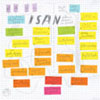 There is a big difference between a musician and a gearhead, and when the music becomes more about the technological process than the product, its creators sadly become the most entertained audience.
There is a big difference between a musician and a gearhead, and when the music becomes more about the technological process than the product, its creators sadly become the most entertained audience.
Tech fetishists can rejoice in the new collaboration between Antony Ryan and Robin Saville. Not only does it sound like it has been produced by people who spent far more time messing with each individual blip than writing powerful melodies; the cover artwork is a schematic diagram showing the duo's setup with labels for LFO, OSC, ring mod, envelope, and other stuff that only tech-heads could possibly find cool. There are some cool sounds on the album, don't get me wrong; Isan have clearly mastered the craft of sound creation. Although the music is instrumental electronic pop, I never feel I'm hearing the same tired old sounds used for beats, bass and melody.
Plans Drawn In Pencil is 45 minutes of peaceful music which I have, on more than one occasion, used to fall asleep to and could easily have playing in the background at work. Warm bass sounds are on the threshold of hearing in the tracks "Look and Yes," while "Ship" is like how I feel when I'm out in the country, away from all the city lights under a galaxy of bright stars.
I listen to a lot of music that is void of melody and focused on the development of the sounds themselves, however most of the artists disregard the pop framework and let songs and sounds evolve into much more vast and monumental pieces. The best tracks on this disc are far too short: "Seven Mile Marker" and "Roadrunner" have a promising momentum, but Ryan and Saville miss good opportunities for lead melodic development. I would love to hear the beat-less "Immoral Architecture" stretched out beyond 20 minutes, however at only 3½, it leaves much more room for throwaway bits like the gimmicky slowing of "Five to Four, Ten to Eleven" or the cheesy fake theremin sounds on "Yttrium" (which is not a Fridge cover).
By the end of the disc, I'm not in discomfort, but I'm also not satisfied. While Isan might be experimenting with more daring musical endeavors, the duo could easily be doomed to be only represented by what the record labels they work with are prepared to release.
samples:
Read More
- John Kealy
- Albums and Singles
The 7" format does not allow enough time for the piece to unfold. While the material here isn't more than a stone’s throw from the other parts of Echo Poeme it doesn’t have the time to build up to the hypnotic beauty I enjoyed with the previous releases. It only feels like the tracks (“Mona Twisted” and “Twisted Mona”) are getting going when the disc runs off. It also doesn’t help that it sounds thin and distorted when the female voice uses sibilant sounds. I was hoping for a good quality and heavy piece of vinyl but what arrived was a thin and almost bendy sliver of vinyl. For the money involved I would have thought a higher grade pressing would have been achieved, especially since so many copies of Sand Tangled Women were sent back to the factory for being inadequate.
Read More
- Gary Suarez
- Albums and Singles
What this relative newcomer lacks in intensity he certainly makes up for in brooding atmosphere, as exemplified best on "Rebellion," where the hospital room heart monitor blips and echo chamber plonks adorn this heavy head nodder. Omen has a firm grasp on creating and maintaining a strong low end vibe, which remains everpresent on the two B-side cuts. The ominous textures of "Frontline" are punctuated by a punchy bassline that inevitably breaks out of its shell to demand attention as the prime melodic element to fixate on, even though a buzzy synth hook tries its best to dominate closer to the end. "Aphrodite" closes this record out with backwards-played beats, ghastly digeridoo-esque groans, and, of course, deep dark bass vibrations.
Read More
- Administrator
- Albums and Singles
 I'm left completely confused listening to this album, trying to keep up with Dustin Krcatovich's wily, random sense of humor and creative, scattershot imagination. Musically, Krcatovich is ubiquitous. One moment his music is the product of exposure to home recordings and pop music and at another it is the product of listening to "Revolution 9" too many times.
I'm left completely confused listening to this album, trying to keep up with Dustin Krcatovich's wily, random sense of humor and creative, scattershot imagination. Musically, Krcatovich is ubiquitous. One moment his music is the product of exposure to home recordings and pop music and at another it is the product of listening to "Revolution 9" too many times.
Vive La Fantastique! Avec Actual Birds and Friends begins with "Honesty is Still My Best Policy," a song rooted in the Velvet Underground's simplicity, but reaching for a more finely produced fuzz. The suggestion is of the mid to late 1960s, with enough retrospect to make up for any of the edgy aspects of that period that didn't work or come to fruition. The bits of this album that sound like pop music are nice and clean, with all the charm that a home recording has to offer. The other parts are fairly typical exercises in tape manipulation and looping. Voices rebound, echo, wash, and repeat in often nonsensical patterns. Instead of expanding the album's reach and offering more to fans of strange music and pop alike, this inclusion of strange sounds basically severs the album from itself. The disc no longer sounds like a coherent or cohesive package and begins to sound like a random assembly of songs that didn't fit anywhere else, either.
With the first quarter of the album sounding like a competent set of songs, this is a bit of a disappointment. Krcatovich introduces the album well, and until "O Ye of Little Faith (Something I Should Not See)" begins, there's no reason to think that the album is about to sink under the weight of its own conception. From that point forward, the "experimental" end of the album begins; while there are recognizable songs on some of them, there's also a huge load of unnecessary effects, distortion, and strange instrumentation littered over Krcatovich's voice. His songs do just fine as little guitar numbers. They're catchy without needing any weird production or unusual technique thrown in for spice. It is possible to do too much to a song or a record, Actual Birds has made the mistake of doing just that. Not only do the songs become stranger and less appealing as they go, but the way Krcatovich sings begins to fall out of harmony with the music; in some places the juxtaposition is jarring and uncomfortable.
This is the first effort from an obviously ambitious musician, but some amount of temperance will be needed to take his raw talent and turn it into something worthwhile from beginning to end. As it stands, now, there are a few treats on this record, but not enough to warrant multiple listens. Tape loops and pop songs does not an experimental album make, so maybe Actual Birds should just stick to what they're best at: writing some decent hooks. That'll improve whatever their next release is a thousand fold.
samples:
Read More
- Administrator
- Albums and Singles
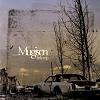 This album is the soundtrack to a film called A Little Trip to Heaven which unfortunately I haven’t seen. As such, I cannot even begin to guess if Mugison’s music suits the film or not. Without the movie to skew my opinion in any direction I can safely say that this release is pretty damn boring and a chore to listen to.
This album is the soundtrack to a film called A Little Trip to Heaven which unfortunately I haven’t seen. As such, I cannot even begin to guess if Mugison’s music suits the film or not. Without the movie to skew my opinion in any direction I can safely say that this release is pretty damn boring and a chore to listen to.
Little Trip is dripping with Americana or at least an Icelandic view of Americana. Pedal steel guitar and brass are used to excess throughout the CD. I found the whole thing cloying; it was like Radiohead doing country or something equally inappropriate. Maybe in the context of the film this music is a masterstroke but on its own it just sounds self indulgent and trite. “Go Blind” and “Little Trip to Heaven” are two pieces that appear early in the album (they are songs as opposed to the many miniature soundscapes on the album). Both are corny and highly annoying. The vocals are mawkish and false sounding; breathless exaggerations of words here intended to bring “feeling” to the lyrics instead bring out nausea in me.
I struggled to find any saving grace to Little Trip. Nearly every track is a new experience in tedium. It feels like Mugison wants to irritate me. The closest thing to good on the album is “Alone in a Hotel” which is a short piece that consists solely of trumpet and trombone. It lives up to its name, the brass sounds as lonesome as Hank Williams. It is followed by “Rush,” the only other piece that I could take. It is a simple repeating riff that speeds up and up as a screaming slide guitar howls through it. Apart from these, the rest of Little Trip is exceptionally bland.
Normally I’ve a lot of time for anything put out on Ipecac as generally Mike Patton will release something that may not be good but it will be at the very least interesting or unusual. Little Trip is anything but interesting or unusual. Instead Mugison have made an incredibly dull album that has put me off ever sitting down to watch the film for which it was composed for.
samples:
Read More
- Matthew Jeanes
- Albums and Singles
This record was described to me a little over a year ago as "Bong-Ra's post rock project" which is just a lazy way to say that this sounds nothing like Bong-Ra and a little more like records that combine traditional instruments and sampled beats to build brooding atmospheres. Atmosphere is what the Kilimanjaro Darkjazz ensemble specializes in, and this self-titled album is is full of richly composed themes. There are a few moments when breakbeat mechanics threaten to take over from the long droning backgrounds and bits of strings and saxophones, but thankfully the record never tries to play the line between dance music and mood music.
Bong-Ra can release a new mashup breakcore record every month if he wants to, so it's nice to hear him spending time with tunes that are more of a stretch and more rooted in organically evolving textures. The record takes a few odd detours like a screaming blast of noise that envelopes the melody of one song, and some ambient passages that bridge more fully fleshed out tracks, but I imagine that down the road, this is the Bong-Ra related record I'll pull out more often than any others because it throws genre rules to the wind and winds up working in unexpected ways.
Read More
- Administrator
- Albums and Singles
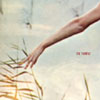 At the center of this quartet is Fly Pan Am guitarist Jonathan Parent and Shalabi Effect/solo experimentalist Alexandre St-Onge, but the eponymous debut sounds like it might as well be the most logical progression from Fly Pan Am's last record.
At the center of this quartet is Fly Pan Am guitarist Jonathan Parent and Shalabi Effect/solo experimentalist Alexandre St-Onge, but the eponymous debut sounds like it might as well be the most logical progression from Fly Pan Am's last record.
The album both opens and closes with more loose, almost noisy bits, and while these songs aren't improv-based, they're not quite melody based either: the hook is predominantly controlled by the drummer and bassist and their intimate relationship. After over three minutes of primitive modulators imitating racing cars on "Ferrari En Feu," the grooving commences. This one's an upbeat melody with chirping guitar and effects, but it also introduces us to the rare sound of '80s synths (which show up much later), however downplayed behind the drummer and bassist who are easily in the zone. The rhythm section continues their reign through the next three songs as distorted vocals, squelchy electronics, and an abrasive guitar decorate the tunes.
It's not until the third song, the nine-minute "Tu N'avais Qu'une Oreille" that lyrical vocals come into the mix, however the non "oooh"s are in French and beyond my comprehension. The instrumental "L'homme Avec Cœur Avec Elle" seems to have a genre crisis, as it opens up with a very Neu!-esque chugging yet halfway through completely shifts gears, with a bluesy interplay between drums and guitar, saxophone, and sped up source tapes of what could easily be birds and other assorted wildlife. The finale is a bit of a departure from the rest of the sound but hardly anything unexpected that Alexandre St-Onge would attempt. "Ce N'est Pas Les Jardins Du Luxembourg" spends a lot of time without the presence of any rhythms. It's the sound of birds and audio-manipulated laughing hyenas at daybreak up against musique concrete tone poems that glisten like the morning dew, and before long it's reminding me of the non-musical score to the film Fantastic Planet. After about four minutes, the thumping comes in, primitive and creepy, like the natives are restless and we're running through the forest trying to escape. When the beat ends we're in some surreal dream-like state, with moaning voices paired with the eerie birds and musique concrete of the song's opening.
Produced with Godspeed's Theirry Amar and mastered by guitarrorist Harris Newman, this project is a good combination of all the sources. It effectively brings the experimentalism out of the often sterile academic arena and places it in a fun rock context that has the potential to win a lot of admirers. However, a catchier name wouldn't have hurt.
samples:
Read More
- Administrator
- Albums and Singles
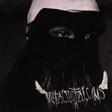 This is a better successor to Coco Rosie's La Maison de Mon Reve than Noah's Ark, with similar gloomy smoke and theatrical mirrors allied to louder bursts of percussion and fuzzy, metallic guitar. As with La Maison a poignancy emerges from an imitation of the passage of time, like the sound of a woman singing as she mends clocks.
This is a better successor to Coco Rosie's La Maison de Mon Reve than Noah's Ark, with similar gloomy smoke and theatrical mirrors allied to louder bursts of percussion and fuzzy, metallic guitar. As with La Maison a poignancy emerges from an imitation of the passage of time, like the sound of a woman singing as she mends clocks.
The shock of Nico's sampled voice gives an otherwordly edge to the first song "Journey," and from here the disc seems in thrall to the pace and temperature of her delivery. There are traces of the ghostliness of Alva, and (on the excellent "Snakes and Tea") of Virginia Astley's pastoral calm. Other developed pieces like "Disparu," "Four Hearts," and the graceful "Pale Dog" make the mere recording of waves as the total of "Ocean" seems worthless, although the notion of being outside is almost relief from a certain claustrophobia. Antony, (the increasingly ubiquitous) Devendra Banhart, Greg Rosgrove, and Jana Hunter join in to good effect, but Nico's 'appearance' trumps them all.
Lest we forget, La Maison de Mon Reve was a hideously seductive perfume of cartoonesque pre-war blues, twee-hop, and cold dollhouse opera. The sounds chimed and ticked in minimalist pop-folk delirium and the sisters spewed existential vomit, gloriously sweet as a childhood memory taken from someone else's photograph. Desert Doughnuts is neither as sexy, nor as sad, and may not have the shelf-life of that little gem, but it should fare better than the disposable Noah's Ark. Only one Casady sister, Sierra, is in Metallic Falcons, along with Matteah Baim.
I ignore whispers of ignorant racism and trust funds and am not at all concerned whether Metallic Falcons
or Coco Rosie are deemed 'real' or pretentious. Everyone who has nothing much to say hasn't the decency to invent their own gibberish language, like Liz Fraser. Yet, in a post-Philip K. Dick reality, what is authenticity?
I take the faint Eastern influences on Desert Doughnuts as sound, not cultural expression. The fake beards are fake, but they are, nonetheless, beards.
sounds:
Read More


